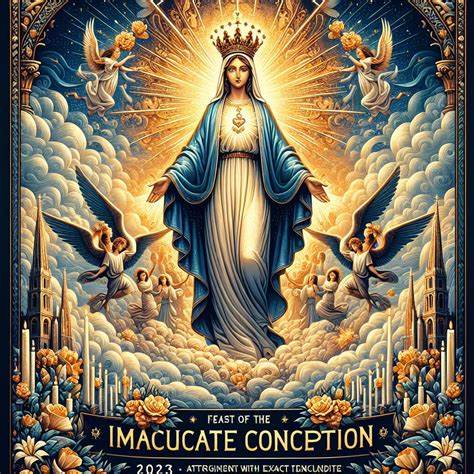Immaculate Conception
The doctrine of the Immaculate Conception states that Mary was conceived without original sin. This belief is distinct from the virgin birth of Jesus.
- Proclamation: This doctrine was solemnly defined by Pope Pius IX in 1854 in the apostolic constitution *Ineffabilis Deus.
- Theological Basis:The Immaculate Conception is rooted in the belief that Mary, destined to be the mother of God (Theotokos), was preserved by God from the stain of original sin from the moment of her conception. This unique grace was given to her in view of the merits of Jesus Christ, the Savior of the human race.
The doctrine of the perpetual virginity of Mary asserts that Mary remained a virgin before, during, and after the birth of Jesus Christ. This belief is an important aspect of Catholic teaching and has been held since the early centuries of the Church. Here are key points and theological considerations regarding this doctrine:

Historical Development
- Early Church Fathers: The belief in Mary’s perpetual virginity is evident in the writings of early Church Fathers such as St. Augustine, St. Jerome, and St. Athanasius. They defended this doctrine against various challenges and misunderstandings.
- Ecumenical Councils: The Second Council of Constantinople in 553 AD reaffirmed the doctrine by referring to Mary as “ever-virgin.” The Lateran Synod of 649, under Pope Martin I, also explicitly affirmed Mary’s perpetual virginity.
Biblical Basis
- Old Testament Typology:Mary is often seen as the New Eve and the Ark of the Covenant. Just as the Ark was pure and untouched, Mary is believed to have remained pure and a virgin.
- Prophecies: Isaiah 7:14 is often cited, where the prophet says, “Behold, a virgin shall conceive and bear a son.” This is interpreted as a prophetic reference to Mary and the miraculous nature of Jesus’ birth. New Testament References:
- Matthew 1:18-25:This passage describes Mary as a virgin who conceives Jesus by the Holy Spirit. The phrase “knew her not until” (verse 25) is interpreted by the Church not to imply a change after Jesus’ birth but rather to emphasize her virginity at the time of Jesus’ conception and birth.
- Luke 1:26-38: The Annunciation narrative highlights Mary’s virginal status and her consent to God’s plan. The question, “How will this be, since I am a virgin?” underscores her intention to remain a virgin.
Theological Significance
- Total Dedication to God: Mary’s perpetual virginity is seen as a sign of her total dedication and unique consecration to God. It underscores her singular role in salvation history as the Mother of God.
- Symbol of the Church: Mary, as ever-virgin, is also viewed as a symbol of the Church, which is called to be pure and faithful to Christ. Her perpetual virginity reflects the spiritual fruitfulness of the Church in bringing forth believers in Christ.
- Miraculous Birth: The belief in Mary’s virginity during childbirth emphasizes the miraculous nature of Jesus’ birth. The Church teaches that Jesus’ birth did not diminish Mary’s virginity but rather sanctified it. You can read more about the Doctrines of Mary
Addressing Common Objections
- “Brothers and Sisters” of Jesus: References in the Gospels to Jesus’ “brothers and sisters” (e.g., Mark 6:3) are understood by the Church to refer to close relatives, such as cousins, or members of an extended family, not biological siblings. The Greek word “adelphoi” can mean brothers, close kin, or compatriots.
- Joseph’s Role: St. Joseph is honored as Mary’s chaste spouse and the foster father of Jesus. The Church teaches that their marriage was a true and holy union, focused on their mutual mission to care for and protect Jesus.
Devotional and Liturgical Expressions
- Prayers and Titles: Mary’s perpetual virginity is celebrated in various prayers and hymns, including the Litany of Loreto, which calls her “Mother inviolate” and “Virgin most faithful.”
- Feast Days:Feasts such as the Solemnity of the Annunciation and the Feast of the Nativity of the Blessed Virgin Mary highlight aspects of Mary’s unique role and her perpetual virginity.
The doctrine of Mary’s perpetual virginity is a testament to her unique role in God’s plan of salvation and her exceptional holiness. It underscores her complete dedication to God and her singular place in the history of salvation. If you have further questions or need more detailed explanations, feel free to ask! You can also read more about the catholic doctrines




Leave a Reply